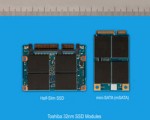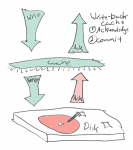With Apple almost certain to introduce a new MacBook Air, questions have turned to the specifics of the hardware to be used. A leaked pre-production photo features an odd memory configuration (not to mention four batteries), a device I immediately recognized as an SSD-on-a-stick. With this high-profile introduction of a new SSD stick form, I thought it was time to cover these unconventional new storage formats.
Computer History
Considering the history of computing, from the enterprise to the home.
Overland Snaps Up MaxiScale to Scale Up Snap
Overland Storage is showing intriguing signs of life. Once relegated to OEM tape library duty, Overland received an injection of cash and (more importantly) talent this year. Now the company is stepping up the technology behind their SnapServer NAS array by acquiring scale-out file storage company, MaxiScale. They intend to bring the scalable capacity and performance normally associated with enterprise and high-performance computing systems to the mass market.
The Four Horsemen of Storage System Performance: Never Enough Cache
Perhaps the previous discussion of spindles left you exhausted, imagining a spindly-legged centipede of a storage system, trying and failing to run on stilts. The Rule of Spindles would be the end of the story were it not for the second horseman: Cache. He stands in front of the spindles, quickly dispatching requests using solid state memory rather than spinning disks. Cache also acts as a buffer, allowing writes to queue up without forcing the requesters to wait in line.
An Introduction To exFAT
Microsoft already gave the world FAT and NTFS, and both have become common in the non-Windows world thanks to flash drives, SD cards, and portable disks. But the folks from Redmond are now introducing a new filesystem, exFAT. Do we really need a new filesystem?
Stephen’s HP Product Line Decoder Ring
HP has always been an alphabet soup company, assigning just about every item in their bewildering array of products a unique product number. Like Mercedes-Benz cars, even the product names are a mix of letters and numbers that can be off-putting to browsers. Now that they have grown to supersize proportions through internal expansion and acquisition, just about everyone outside the company seems to have trouble decoding the product line, so I decided to take a stab at decoding the enterprise lineup in plain english.




